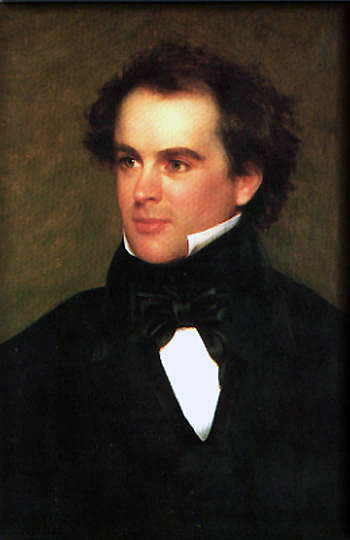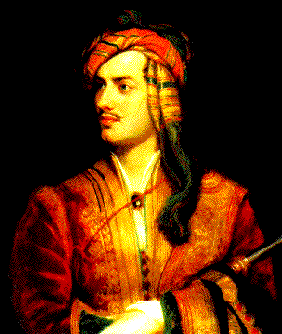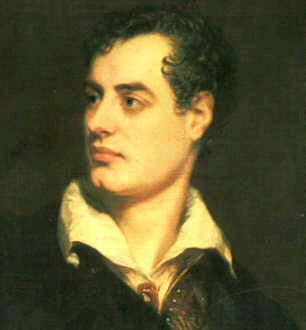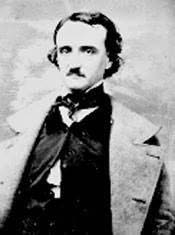LITR 5535 American Romanticism

Monday 7 March: Nathaniel Hawthorne, N 579-584, 610-635 (“Young Goodman Brown,” “May-Pole of Merry Mount,” & “Minister’s Black Veil”)
| midterms research proposals Byronic hero Hawthorne reader: Angela Douglas [break] assignments "American Renaissance" Hawthorne's style poetry: Jo Lynn |
|
Monday 9 October: Nathaniel Hawthorne, N 579-584, 610-635 (“Young Goodman Brown,” “May-Pole of Merry Mount,” & “Minister’s Black Veil”)
selection reader / discussion leader: Angela Douglas
poetry: Sylvia Plath, "Blackberrying," N 2783
poetry reader / discussion leader: Jo Lynn Sallee
What's Romantic?
assignments from last class:
Hawthorne: add N 89-93
Poe: gothic
as sensation / psychology
Hawthorne: past as Puritan; light / dark as innocence / guilt + shades of gray
Poe: past as loss; gothic space as unconscious mind; house as head
both "Byronic"
dark, handsome, haunted men of "genius"
How do Poe, Byron, others fit model of Byronic Hero?
What significance of the Byronic hero?
Other possible topics:
Hawthorne's style, highly identifiable--when you read a Hawthorne story or novel, how can you tell it's Hawthorne?
Additional questions for today
What's Romantic about Hawthorne?
Why does the question seem counter-intuitive? What do we know or study about Hawthorne that doesn't seem Romantic?
Synthesis?
Instructor's notes
What's
Romantic about Hawthorne?
Period—Hawthorne lives 1804-64
Discussion of "romance" in prefaces to novel
Byronic affectations in author profile
Uses of gothic, especially to describe past and socially marginal or counter-cultural
Why does the question seem counter-intuitive? What do we know or study about Hawthorne that doesn't seem Romantic?
Effects muted compared to Poe (possible exception: witches' coven in "Young Goodman Brown")
Psychological realism previews James (after Civil War, later in our course)
Elements of psychological realism
Shifting viewpoint
Synthesis?
Style ahead of its time > timeless
Elements of psychological realism
gothic shading
midterms
Difficulty of criticizing criticism, critics accepting criticism
No matter how carefully you wrote and I read and then wrote, there's almost
always some collision.
My inevitable reaction upon reading anything other than glowing praise: "S/he didn't get it."
With experience, pain gets normalized
Nobody exactly gets what you're trying to do, ever, but important to try, important to continue. No final word in discourse, but only people continuing to read and write with each other.
research proposals
consider continuing / developing midterm topic
"Make work pay twice"
importance for literary scholars of developing some lines of thought, ideas they have developed and can trot out and apply in various situations
Monday 16 October: Research Proposal Due (within 72 hours of class). Harriet Jacobs, Incidents in the Life of a Slave Girl, N 812-834. Frederick Douglass, Narrative of the Life . . . , N 939-973.
selection reader / discussion leader: Tish Wallace
poetry: Robert Hayden, "Those Winter Sundays," N 2669
poetry
reader / discussion leader:
Anuruddha Ellakkala
(from syllabus)
Research
Project
Examples on webpage: Students should review examples of previous student research proposals and projects on the “Model Assignments” sub-page of our course webpage.
Students
may choose from two
options for their research projects.
·
Option 1: 12-15 page traditional analytic / research essay relevant to course.
·
Option 2: 15-20 page journal of research and reflections concerning a variety of
materials relevant to the course.
Weight: approximately 40% of final grade
Due dates:
· proposal due via email within 72 hours of 16 October
· project due via email due within 72 hours of 13 November
Research proposal: Due
via email within 72 hours of 16.
Write at least two paragraphs containing the following information:
· Indicate which option—Option 1 (essay) or Option 2 (journal)—your research project will take. (If you’re stuck between the options, or trying to choose between different subjects, explain and explore the situation—I’ll reply as helpfully as I can.)
· If Option 1, list the primary text(s) you intend to work with. Explain the source of your interest, why the topic is significant, and what you hope to find out through your research. Describe any reading or research you have already done and how useful it has been.
· If Option 2, mention your possible choices of topics and areas of research for categories listed in Option 2 (journal) requirements.
· Explain the source of your interest, why the topic matters, and what you want to learn.
· Mention the types of research you intend, e. g., Background (encyclopedias, handbooks, critical digests, etc.), Secondary (advanced scholarly articles or books exploring a particular question, or reviews of scholarly books), etc.
· For either option, conclude by asking the instructor at least one question about your topic, possible sources for research, or the writing of your research project.
· Email or otherwise transmit an electronic version of your proposal to me at whitec@uhcl.edu.
· Research report proposals will be posted on the course webpage.
· If you want to confer about your possible topic before submitting a proposal, welcome to confer in person, by phone, or email.
Response
to Paper Proposal
· The instructor will email you a reaction okaying the proposal and / or making any necessary suggestions.
· You are welcome to continue going back and forth with the instructor on email until you are satisfied with your direction.
· Student does not receive a letter grade for the proposal, only a “yes” or instructions for receiving a yes. Students will not lose credit for problems in reaching a topic as long as they are working to resolve these problems.
· The only way you can start getting into trouble over the proposal is if you simply don’t offer very much to work with, especially after prompts from instructor. An example of a really bad proposal is one sentence starting with “I’m thinking about” and ending with “doing something about Poe,” then asking, “What do you think?” In these cases, a bad grade won’t be recorded, but the deep hole the student has dug will be remembered. Notes regarding the paper proposal may appear on the Final Grade Report.
biggest issues for my new students:
difference / choosing between essay and journal
What's expected in a journal? (it's not a diary or a junk-book)
Answers:
Review explanation in syllabus (as I'll begin to do next week)
Look at examples on Model Assignments page
assignments--"American Renaissance"
Monday 16 October: Research Proposal Due (within 72 hours of class). Harriet Jacobs, Incidents in the Life of a Slave Girl, N 812-834. Frederick Douglass, Narrative of the Life . . . , N 939-973.
selection reader / discussion leader: Tish Wallace
poetry: Robert Hayden, "Those Winter Sundays," N 2669
poetry
reader / discussion leader:
Anuruddha Ellakkala
Monday 23 October: Abraham Lincoln, N 757-760. Harriet Beecher Stowe, selections from Uncle Tom’s Cabin, N 771-806. Thoreau, N 837-853 (“Resistance to Civil Government”).
selection reader / discussion leader: Leigh Ann Moore
poetry: Theodore Roethke, "I Knew a Woman," N 2641
poetry reader / discussion leader: Elizabeth Ann Davis
Next two classes, shift to historical emphasis
Objective
1b. The Romantic Period
· To note the concentration of Romanticism in the late 18th and 19th centuries and its co-emergence with the rise of the middle class, the city, industrial capitalism, consumer culture, and the nation-state.
American Romantic period a. k. a. "American Renaissance"
1820s-1860s
ends with U. S. Civil War, 1861-65
coincidence of American Renaissance with a number of historical movements
Manifest Destiny, expansion westward, Mexican War (mentioned by Thoreau)
Expansion of southern tier of states meant expansion of slavery, which meant that slavery wasn't dying but vital, growing
Abolition movements
Women's rights movements (Seneca Falls 1848, Margaret Fuller)
Utopian or communal movements (Shakers, Brook Farm, Fruitlands, Oneida)
(Hawthorne lived at Brook Farm for a few months, Fuller and Emerson visited; Alcott family started Fruitlands)
millennial movements: Millerites ( > 7th Day Adventists, Jehovah's Witnesses), Latter-Day Saints, Shakers
Evangelical movements--"Second Great
Awakening" ("Great Awakening"--i. e., the "First Great
Awakening") was approximately a century earlier, following Jonathan Edwards
(Rise of Methodism: John Wesley, George Whitefield. Rise of Baptistry.)
Questions for Douglass and Jacobs:
Monday 16 October: Research Proposal Due (within 72 hours of class). Harriet Jacobs, Incidents in the Life of a Slave Girl, N 812-834. Frederick Douglass, Narrative of the Life . . . , N 939-973.
selection reader / discussion leader: Tish Wallace
poetry: Robert Hayden, "Those Winter Sundays," N 2669
poetry
reader / discussion leader:
Anuruddha Ellakkala
both texts are slave narratives, extraordinary historical genre, highly developed during period of American Renaissance
inclination to read slave narratives as history rather than literature
but as literature . . .
What's Romantic about the slave narratives?
What's not romantic? Where does reality or history intrude?
Hawthorne
Byronic hero
Poe, Hawthorne as "Byronic Hero"
How do Poe, Byron, others fit model of Byronic Hero?
What significance of the Byronic hero?
characteristics of the Byronic Hero (from a Jane Eyre site)
blurbs on recent scholarly book on Byronic Hero
course syllabus on Byronic hero
|
|
|
|
|
|
Poe & Byron as Byronic?
looks: handsome, troubled, brooding image
identified with literary
subjects (cf. Plath: people can't read their works without reading the authors
into them--contrast Cooper, James, Irving)
secrets? secret sin? incest? (last taboo besides cannibalism)
Byronic hero
Character type named for English poet Lord Byron, 1788-1824
|
|
|
dark, handsome appearance
"wandering," searching attitude
haunted by some secret sin or crime
modern culture hero: appeals to society by standing apart from society, superior yet wounded
compare: Magua, Hawthorne, Claggart in "Billy Budd"
contemporary examples: James Dean, Kurt Cobain, Trent Reznor
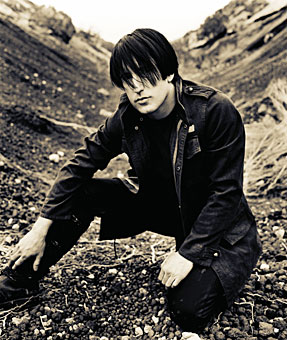
suggestions from girls in coffee shop:
Brandon Lee in The Crow

LeStat in The Vampire Chronicles
Johhny Depp?

Layne Staley of Alice in Chains

Alan Rickman
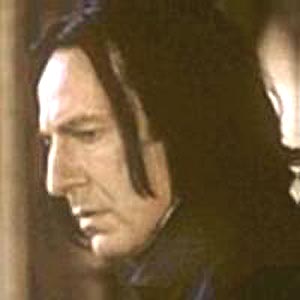
Sean Connery
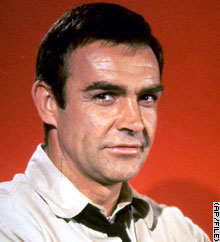
members of Sublime--died early, "danger to society"
Sting

Tupac Shakur
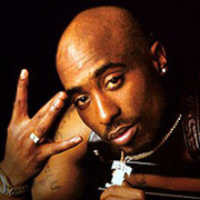
Rufus Sewell in Dark City
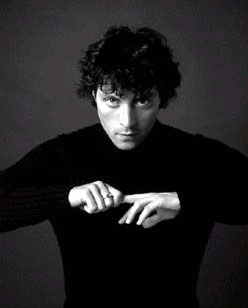
from literature:
Heathcliff in Wuthering Heights
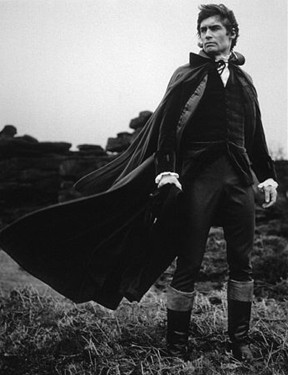
Rochester in Jane Eyre
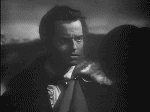
Women manifesting Byronism?
Cora in Mohicans

Question: What is the significance of the Byronic hero as a "culture hero?"
Why does the paradigm, image, or symbol continue to recur and / or evolve?
What's ironical about the significance?
significance: culture hero who is dangerous to the culture for which he is a hero
beware sexism? How about a Byronic heroine?
Term isn't current except as a turn on a familiar figure.
Similar associations may appear through
"fair lady - dark lady" paradigm
Cora as Byronic? femme fatale figure? Ligeia (vs. Rowena)
If women appear in pairs, maybe men do too
If in Mohicans Magua is a Byronic figure, then what is Uncas? "Golden Boy"
possible significance of Byronic hero as contemporary culture-hero:
culture-hero doesn't support (or fit into) culture of which a part
This could be a working response to the Rip Van Winkle syndrome; i. e., society changes so fast that to be invested in society is to lose currency? (But then this is my answer to everything . . . .)
Two final questions re Hawthorne:
gothic
personal style
Ultimately inseparable.
Both contribute to answering the style question: How can you tell you're reading a Hawthorne text?
Hawthorne's gothic
610 [wilderness gothic]
635 corpse sits up
635 decay
gothic as light and dark = states of mind
(+ intrusion of red, pink, other lurid or passionate colors)
622 shadows of forest mingle gloomily
623-4 fading light > black shadows
626 deepening twilight
633 a cloud into the sunshine, an ambiguity of sin and sorrow
633
shaded candlelight
634 deepen the gloom
Hawthorne uses their moral seriousness as a way of exploring complex problems of human psychology, conscience, community, etc.
Hawthorne incorporates gothic in a new way
takes advantage of appearance of Puritans, typically dressed in sober dark garments with some white clothing.
Here's our earlier scheme from Cooper's Mohicans
| gothic color scheme |
light |
dark |
red/yellow |
| Western Civilization moral metaphysics |
white as innocence, purity |
black or darkness as evil, decay |
blood? anger? |
| the races of early North America |
white people (European Americans) |
black people (African Americans) |
the "red man" (American Indians) |
Now let's change the patterns and subjects for Hawthorne
| gothic color scheme |
light |
dark |
red, yellow, etc. / shading, blending of light and dark |
| Puritan clothing, environment |
white clothes, sunshine, light of God |
dark clothes, forest, darkness of evil |
interplay of light and dark, Puritan in forest, Faith's pink ribbon |
| Western Civilization moral metaphysics |
white as innocence, purity |
black or darkness as evil, decay |
moral ambiguity |
(Look for contrast with this in African American writings, for whom these identifications are threatening.)
620 [Gothic
imagination of Puritans; correspondence]
623 prayers before
daylight, evening prayer time
Hawthorne's individual style
Hawthorne's style, highly identifiable--when you read a Hawthorne story or novel, how can you tell it's Hawthorne?
style as both literary techniques and subject matter
Review Poe's Style
Poe's literary techniques:
Musicality, dreaminess, sensory pleasure in language
European gothic: ancient buildings, family curses, esoteric learning
Gothic color scheme: black and white + red or other lurid color ("blood-red moon" at conclusion of "Usher," "drop of ruby fluid" in "Ligeia")
romance narrative as desire & loss
"Excess": Poe piles on superlatives ("the most . . . ") in effort to push consciousness to extremes of fear, sublime, etc.
Oxymoron: "verdant decay"
Poe's subject matter:
Origination and development of popular genres: detective story, science fiction, gothic / horror
death of beautiful woman
Gothic as psychology: haunted castle as haunted mind (correspondence between internal and external worlds)
literary techniques
correspondence
615 [correspondence]
630 [romantic correspondence between interior and exterior]
shifting viewpoint
627
[viewpoint]
628 viewpoint
truth as evanescent, ephemeral, transient, elusive: "flickering," "glimmering"
"something"--
symbols
qualifiers—may have, could have
equality in sin
critical favorite because reader participates; Hawthorne's style builds in a lot of interpretation on part of reader
subject matter
Hawthorne’s themes
Brotherhood in sin, humility
vain, delusionary, obstinate man; sensible, flexible woman who resists categories, fantasies
616 [democracy of sin < equality > redemption]
stylistic idiosyncrasy of Hawthorne: use of "qualifiers"
What does it mean to "qualify" one's speech?
"So-and-so is stupid, evil, and wrong!"
(Anyone who can speak thus is extreme in their expression.)
"You need to qualify what you're saying."
back it up?
"I have seen so-and-so in many situations, and in all of them s/he has acted in such a way that no reasonable person could regard them as intelligent, moral, and just."
This is a qualified statement. Leaves wiggle room, room for disagreement, leaves room to keep talking and thinking.
Webster's definition:
1a. to reduce from a general to a particular or restricted form: modify
1b. to make less harsh or strict: moderate
1c. to alter the strength or flavor of
d. to limit or modify the meaning of
qualifiers—may
have, could have
611 though [qualifier], likeness, almost, uncertain light
616 Either . . . or [qualifier]
617 no slight similitude [indirect language, heavily qualified]
symbols
example of flag
Symbol must first of all be an image, something that can be seen or otherwise sensed.
cultural example: A flag is a piece of colored cloth.
literary example: the minister's black veil
But an image becomes a symbol by accessing or providing meaning(s) beyond the mere fact of the image.
cultural example: The flag stands for patriotism, military honor, the American Dream.
literary example:
Symbols gain power by resisting reduction to a single meaning.
cultural example: The flag can mean different things to different people. If it only means one thing, fewer people salute (or jeer).
literary example:
The various meanings transmitted by symbols become perceptible from different audiences or perspectives.
cultural example:
literary example:
Bedford Glossary of Critical Terms
symbol: something that, although it is of interest
in its own right, stands for or suggests something larger and more
complex--often an idea or a range of interrelated ideas, attitudes, and
practices.
Within a given culture, some things are understood to be
symbols: the flag of the United States is an obvious example, as are the five
intertwined Olympic rings. More subtle cultural symbols might be the river as a
symbol of time . . . . [W]riters often create their own symbols by setting up a
complex but identifiable web of associations in their works.
A Handbook to Literature
Symbol A symbol is something that is itself and also stands for something else . . . as a flag is a piece of colored cloth that stands for a country. All language is symbolic in this sense . . . .
All-American Glossary of Literary Terms (research links)
symbol (sim-bol): a
symbol is a word or object that stands for another word or object. . . . For
example a dove stands for Peace. The dove can be seen and peace cannot. . . . Misty
Tarlton, Student, University of North Carolina at Pembroke
Virtual Salt Glossary of Literary Terms
Symbol. Something that on the surface is its literal self but which also has another meaning or even several meanings. For example, a sword may be a sword and also symbolize justice. A symbol may be said to embody an idea. There are two general types of symbols: universal symbols that embody universally recognizable meanings wherever used, such as light to symbolize knowledge, a skull to symbolize death, etc., and constructed symbols that are given symbolic meaning by the way an author uses them in a literary work, as the white whale becomes a symbol of evil in Moby Dick.
631 symbol of a fearful secret
632 perhaps a symptom of mental disease
635 symbol
635
What, but the mystery . . has made this piece of crape so awful
